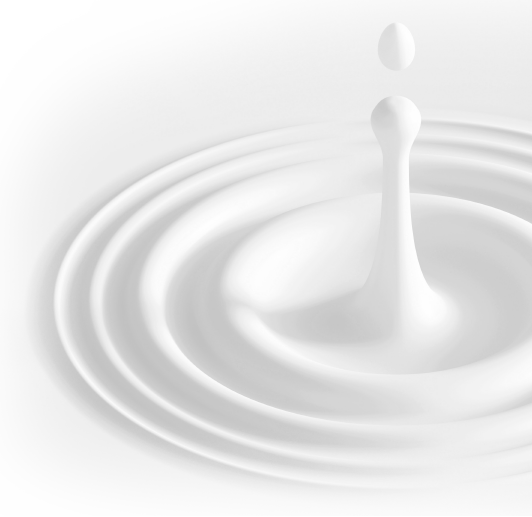Bochum-based researchers from the Cluster of Excellence Ruhr Explores Solvation (RESOLV), together with cooperation partners from Nijmegen, have investigated how acids interact with water molecules at extremely low temperatures. Using spectroscopic analyses and computer simulations, they investigated the question of whether hydrochloric acid (HCl) does or does not release ist proton in conditions like those found in interstellar space. The answer was neither yes nor no, but instead depended on the order in which the team brought the water and hydrochloric acids molecules together.
The group led by Professor Martina Havenith, Chair of Physical Chemistry II, and Professor Dominik Marx, Chair of Theoretical Chemistry, from Ruhr-Universität Bochum, together with the team led by Dr. Britta Redlich from Radboud University, Nijmegen, describes the result in the Journal Science Advances, published online in advance on 7 June 2019.
Understanding how complex molecules were formed
If hydrochloric acid comes into contact with water molecules under normal conditions, such as at room temperature, the acid immediately dissociates: it releases its proton (H+), one chloride ion (Cl-) remains. The research team wanted to find out whether the same process also takes place at extremely low temperatures below ten Kelvin, i.e. below minus 263.15 degrees Celsius. "We would like to know whether the same acid-alkali chemistry as we know on Earth also exists in extreme conditions in interstellar space," explains Martina Havenith, Speaker of the Cluster of Excellence RESOLV. "The results are crucial for understanding how more complex chemical molecules formed in space - long before the first precursors of life came into existence."In order to replicate the extremely low temperatures in the laboratory, the researchers had the chemical reactions take place in a droplet of superfluid helium. They monitored the processes using a special type of infrared spectroscopy, which can detect molecular vibrations with low frequencies. A laser with especially high brightness, as is available in Nijmegen, we needed for this. Computer simulations enabled the scientists to Interpret the experimental results.
It comes down to the order
First of all, the researchers added four water molecules, one after the other, to the hydrochloric acid molecule. The hydrochloric acid dissociated during this process: It donated its proton to a water molecule, and a hydronium ion was created. The remaining chloride ion, the hydronium ion and the three other water molecules formed a cluster.
However, if the researchers first created an ice-like cluster from the four water molecules and then added the hydrochloric acid, they yielded a different result: the hydrochloric acid molecule did not dissociate; the proton remained bonded to the chloride ion.
"Under the conditions that can be found in interstellar space, the acids are thus able to dissociate, but this does not necessarily have to happen - both processes are two sides of the same coin, so to speak, " summarises Martina Havenith.
Chemistry in space is not simple
The researchers assume that the result can also be applied to other acids, i.e. it represents the basic principle of chemistry under ultracold conditions. "Chemistry in space is by no means simple; it might even be more complex than chemistry under planetary conditions," says Dominik Marx. After all, it depends not only on the mixing ratios of the reacting substances but also on the order in which they are added to each other. "This phenomenon needs to be taken into consideration in future experiments and simulations under ultracold conditions," says the researcher.
Addtional Information
Original Publication: Devendra Mani, Ricardo Pérez de Tudela, Raffael Schwan, Nitish Pal, Saskia Körning, Harald Forbert, Britta Redlich, A. F. G. van der Meer, Gerhard Schwaab, Dominik Marx and Martina Havenith: Acid solvation versus dissociation at "stardust conditions", reaction sequence matters!, in: Science Advances, 2019, DOI: 10.1126/sciadv.aav8179
---------------------------------------------------------------------------------------------------
Wie sich Säuren im ultrakalten interstellaren Raum verhalten
Säuren neigen dazu, Protonen abzugeben. Unter Weltallbedingungen zeigen sie allerdings ein komplexeres Verhalten.
Wie Säuren bei extrem tiefen Temperaturen mit Wassermolekülen interagieren, haben Bochumer Forscherinnen und Forscher vom Exzellenzcluster Ruhr Explores Solvation (RESOLV) gemeinsam mit Kooperationspartnern aus Nimwegen untersucht. „Wir möchten wissen, ob es unter den extremen Bedingungen im interstellaren Raum die gleiche Säure-Base-Chemie gibt, die wir von der Erde kennen”, erklärt Prof. Dr. Martina Havenith, Sprecherin von RESOLV. „Die Ergebnisse sind entscheidend, um verstehen zu können, wie sich komplexere chemische Moleküle im All gebildet haben – noch lange bevor die ersten Vorläufer für Leben entstanden.”
Die RUB-Gruppe um Martina Havenith, Lehrstuhl für Physikalische Chemie II, und Prof. Dr. Dominik Marx, Lehrstuhl für Theoretische Chemie, beschreibt die Erkenntnisse gemeinsam mit den Kooperationspartnern der Radboud University in der Zeitschrift „Science Advances”, online vorab veröffentlicht am 7. Juni 2019.
Auf die Reihenfolge kommt es an
Mit spektroskopischen Analysen und Computersimulationen gingen die Wissenschaftlerinnen und Wissenschaftler der Frage nach, ob Salzsäure unter Bedingungen, wie sie im interstellaren Raum herrschen, ihr Proton abgibt oder nicht. Die Antwort war weder Ja noch Nein, sondern abhängig davon, in welcher Reihenfolge das Team Wasser- und Salzsäuremoleküle zusammenbrachte. „Die Chemie im Weltall ist also keineswegs einfach, sie könnte sogar komplexer sein als die Chemie unter planetaren Bedingungen”, resümiert Dominik Marx.
Zusärtliche Information
Ausführliche Presseinformation
Original Publication: Devendra Mani, Ricardo Pérez de Tudela, Raffael Schwan, Nitish Pal, Saskia Körning, Harald Forbert, Britta Redlich, A. F. G. van der Meer, Gerhard Schwaab, Dominik Marx and Martina Havenith: Acid solvation versus dissociation at "stardust conditions", reaction sequence matters!, in: Science Advances, 2019, DOI: 10.1126/sciadv.aav8179

